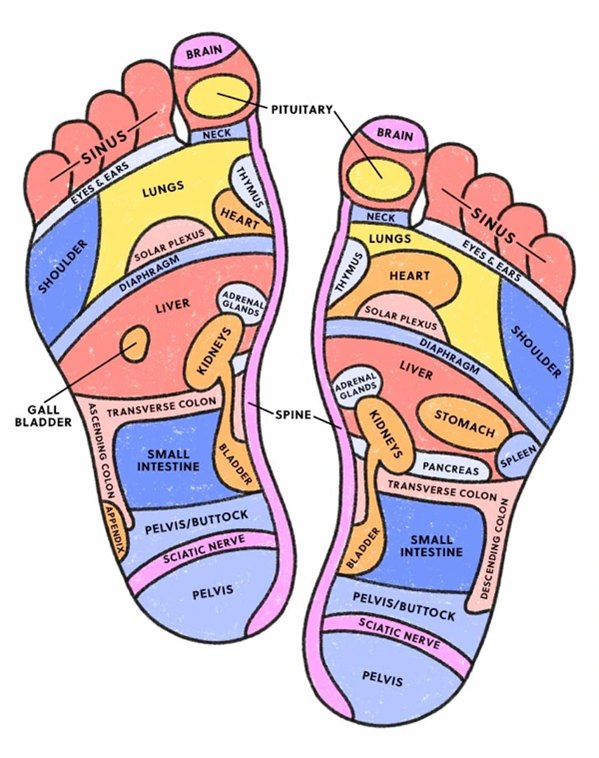Watch as Annette takes us through the ultimate guide to reflexology!
Watch as Annette takes us through the ultimate guide to reflexology!
 How does reflexology work?
How does reflexology work? Reflexology works in a very similar way to acupuncture by using the body’s meridians and stimulating pressure points, or reflex points, in the feet. Just without the needles! We can access all of the body’s organs, structures and systems through the feet; they act as a map of the body, take a look!
By pressing on a reflex point it triggers an effect in the body, it also helps us to understand where there is blocked energy.
As the therapist, you will feel different texture as you work on the feet such as bubble wrap, sponginess or perhaps crystals; these all indicate blocked energy.
The client will feel different sensations which also indicate blockages. Examples are a bruising feeling, sharpness or burning.
It is important to note that the language we use in reflexology is blocked energy and that it does not indicate anything wrong with the body; reflexology does not diagnose. What it does do is remove the blocked energy so that the cells, organs and systems can run better. It allows more nourishment to the tissues and cells, improving circulation.
A reflexology treatment often starts with a ‘foot reading’, looking at the feet to see any significant colouring, for example redress can indicate stress, or areas of dry skin or swelling.
The treatment then starts by opening the zones of the body, all the organs sit within these zones. Next, we would stimulate hypothalamus, a really important point of the endocrine system. It regulates the pituitary gland which controls lots of different hormones in the body. Annette describes this as starting the engine of a car!
We then work through all areas of the body following a routine, paying attention and taking note of any sensations that either the client or therapist notice. We can then come back to these points at the end of the treatment to check the blockage has released or to work on the point some more if it’s still there. In the video below Annette shows us some examples of working through the spine and the shoulders.
· Improve circulation
· reduce stress
· reduce pain
· restoring natural balance
· Relaxation
· Stimulate nervous system
· Relieve sleep disorders
· Palliative care
· Release toxins
Reactions vary from person to person and they are usually positive, for example more energy, relief from symptoms or improved mood. Sometimes toxins may be released from the body and during a treatment clients can react by laughing, crying or with a desire to sleep. Occasionally, following a treatment, symptoms can worsen before clearing, clients can also feel fatigue for a short period.
Hopefully this has answered some of your questions around what reflexology is and how it works!
Edit Banner